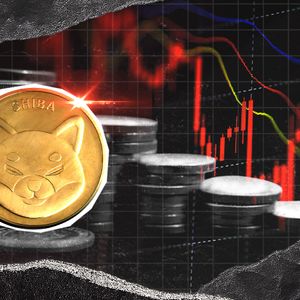Summary BITQ ETF offers indirect exposure to the crypto sector via companies deeply tied to the ecosystem, not direct crypto or derivatives ownership. The ETF’s construction focuses on 'pure-play' crypto firms and large-cap companies with significant crypto initiatives, balancing sector sensitivity and risk. Current macro indicators show a mixed but not unfavorable liquidity environment, while the digital asset factor regime strongly favors upward momentum. Given these conditions, I recommend a tactical buy approach—accumulating BITQ on pullbacks during this sustained UpBeta trend regime. Introduction In today's article, we will analyze the Bitwise Crypto Industry Innovators ETF ( BITQ ) , managed by the famous cryptographic asset firm Bitwise. This vehicle is an ETF that seeks to replicate the behavior of the Bitwise Crypto Innovators 30 Index, an index of 30 companies linked to the crypto economy. It is important to start here, since the proposed vehicle, does not buy cryptocurrencies, but buys shares of companies whose business depends heavily on the crypto ecosystem (miners, exchanges, custodians, infrastructure providers, asset managers, and also some large companies with relevant crypto initiatives). This means that its performance is closely linked to the health of the sector, to activity in crypto-asset markets, and, by extension, to the prices of assets such as bitcoin or ether, but it does so through quoted shares, with the operation and regulation of a traditional ETF. The fund’s own documentation underlines that it does not invest directly in crypto or derivatives; the exposure is indirect via corporates (“Crypto Innovators”). With this, the reader will wonder how the index decides which companies enter and with what weight in it. The methodology used by the management team divides the universe into two levels. Tier 1 (at least 80% of the index) groups so-called “pure-play,” which are companies that earn more than 75% of their revenues from the crypto market (for example, miners or trading and custody platforms) or that have more than 75% of their assets in bitcoin or ether. Tier 2 (up to 20%) includes large companies (capitalization ≥ $10 billion) with a significant and public initiative in the field of crypto – by business or by holding crypto-assets. In each quarterly review, the index selects the top 20 in Tier 1 and the top 10 in Tier 2. The weight of Tier 1 is set at 85% of the index and Tier 2 at 15%; within Tier 1 it is weighted by free float adjusted capitalization, and Tier 2 is weighted equally. That construction has practical consequences for the investor. On the one hand, it provides “clean” exposure to the heart of the ecosystem—the sector’s so-called “picks & shovels”—and avoids excessive dilutions toward generalist technologists. On the other hand, it introduces different sensitivities within the same ETF: miners depend on variables such as the price of bitcoin, the difficulty of mining, and the electric cost; exchanges/custodians live off activity (volume and new highs), in addition to prices; and companies that hold BTC/ETH on their balance sheets move largely with those assets. In recent data, the fund's own prospectus breaks down a relevant weight into segments such as Mining and Trading & Custody, illustrating those operating levers within the portfolio. Like any equities ETF, its NAV rises or falls depending on the shares it owns. In a bullish environment, the crypto industry usually benefits in three ways: better miners’ margins (high BTC price versus costs), higher commission income and new lines of business in exchanges/custodians when volume rises, and direct balance sheet appreciation with BTC/ETH in treasury holding companies. In contrast, in downturns or with regulatory repression, volumes fall, margins are compressed, and on-balance-sheet crypto holdings subtract. To this must be added the equity risk (dilutions, capital issues to finance mining capex, technological and cyclical risks, etc.). Analysis - Macro Fundamental In this section, we will analyze some macroeconomic indicators in detail to try to offer the reader an accurate perspective and a sound recommendation on the vehicle in question. For this analysis, the first metric we analyzed is the Node Analytica indicator called Liquidity Scanner. This metric summarizes, in terms of quarterly change, whether the US dollar financial system is injecting or withdrawing liquidity, and breaks it down into four broad channels: (1) Fed bank reserves (when they rise, it is usually gasoline for risky assets), (2) issuance of Treasury bills (“bills”) and (3) commercial paper (which tends to absorb cash from the money market), and (4) repo operations linked to stress episodes or technical adjustments. Visually, positive tranches indicate net supply and negative net drainage. For an ETF like the one discussed here, which does not buy crypto directly but rather companies whose business depends on the ecosystem’s pulse, this “water level” is crucial. Higher USD liquidity typically translates into a better risk appetite, more generous multiples, and more activity (volume) across platforms and custodians. Conversely, if liquidity were to contract, it would imply multiple compression, more expensive funding for capex-intensive miners, and often volume drops that weigh on commission income. Today, the graph suggests a more volatile and mixed regime than the big boost of 2020–2021. We can see tranches of supply associated with increases in reserves or episodes of repo, but also tranches of absorption when the Treasury pulls short issuance and the money market takes a large part of those dollars. This indicator could be used as a regime filter. When the indicator chains positive readings and accelerates (rising reserves and lower absorption per bills), beta crypto tends to expand, and the ETF tends to benefit via mining margins and brokerage fees. Node Analytica Second, we delve into a more specific metric of the digital asset sector, which is the analysis of factors of the same. This indicator shows us what factor is commanding right now in Bitcoin and, by extension, what kind of exposure tends to work best. When the purple block (“UpBeta”) dominates, the market is rewarding the upward directional beta, which means clean impulses, stretches where you buy risk and let the trend run. For an ETF like the one analyzed here, which brings together miners and intermediation platforms, that regime is especially favorable, because they are companies with operating leverage to the crypto cycle. If the price rises steadily, miners’ margin improves and exchange activity picks up, and both tend to widen the advance against an equivalent move by BTC itself. By contrast, when the frame shifts to Mean Reversion (turquoise) or there are flashes of breakout intermittently, the message is another: more noise, more comings and goings, and more risk of a high-beta ETF like BITQ “over-reacting” in short corrections. Today, the chart shows us a long stretch with UpBeta as the winning factor, chained since late spring and with few interruptions, while the price of BTC is trading at the top of the range of recent months. The investor’s reading is clear in this regard. The trend environment is still active, and as long as it remains, BITQ tends to perform well for the mix of cyclic miners and volume-linked businesses. In other words, this metric is not meant to guess the future, but to describe the regime you're sailing in, which, combined with the Liquidity Scanner in the first section, can help you distinguish when the tide is ticking (positive liquidity + UpBeta) and when it's prudent to deleverage or demand clearer confirmations. Node Analytica Conclusion As a conclusion and to finish this analysis, my recommendation right now is to buy tactically (staggered tickets and in reversals). The Factor Framework marks a sustained UpBeta regime, that is, the market is rewarding the upward trend, and that usually amplifies the profitability of our ETF for the operating leverage of miners and the rebound of activity in exchanges. At the same time, the Liquidity Scanner does not show as broad a tailwind as 2020–21, but neither does it show persistent drainage, rather a mixed pattern that allows for stretches of risk when it coincides with a favorable narrative. Thank you for reading.














